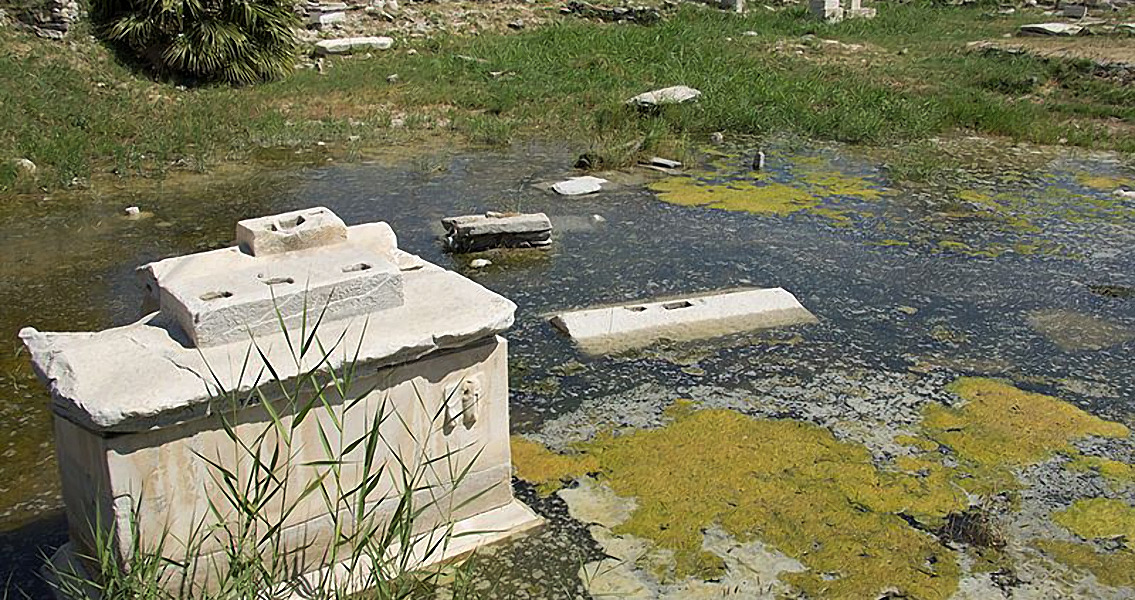<![CDATA[The living dead are popular on TV and in films, and it seems the concept was familiar to ancient Greeks as well, according to University of Pittsburgh archaeologist Carrie Sulosky Weaver who has been studying the graves in a cemetery in Kamarina, a Greek settlement in Sicily dating to between the fifth and third centuries BCE. Among the almost three thousand burials, two stood out because their occupants were partially or wholly covered with pieces of ceramic vessels, possibly to hold them down. In a paper for Popular Archaeology, Sulosky Weaver writes that in one of the graves, number 653, was an individual who showed signs of malnutrition or serious illness. The individual, whose sex has not yet been determined, was partially covered with large pieces of amphora (a large ceramic wine vessel) over the head and the feet. The heavy pieces could be seen as attempts at preventing the grave’s occupant from leaving the burial spot. In the second grave, 693, the occupant was a child around 8 to 13 years in age who had five heavy stones placed along the body, reports Discovery News. There were no signs of disease present. Again, Sulosky Weaver speculates that the reason the stones were there was to keep the child from reanimating. In support of this suggestion, the archaeologist told Discovery News that a few tablets were found at the cemetery: special tablets called katadesmoi which had spells written on them intended to raise the dead from their grave. The tablets also included “petitions” from people to the gods of the underworld asking them to reanimate the dead to “fulfill the request of the petitioner”. This belief in the powers of the underworld to engage the dead in the affairs of the living may seem to contradict the necrophobia suggested by the special preventive measures taken with two of the individuals laid to rest in the cemetery, but they are actually two sides of the same coin, as is common in religious beliefs. The ancient Greek belief that the dead could be raised dates from the Neolithic period, the researcher said. This latest evidence adds to the body of knowledge about these beliefs and the practices they involved. Another discovery that revealed a belief in the potential of corpses to reanimate, this time in Ireland from the Middle Ages, was reported by Discovery News four years ago: two bodies dating from the eighth century each buried with a stone in their mouth. The two men, one aged between 40 and 60, and the other between 20 and 30 years of age, were buried side by side. The stones were deliberately placed in their mouths, in the case of the younger body very violently, almost dislocating the jaw. According to the researchers who made the discovery, led by Chris Reed from the University of Technology in Sligo, putting stones in the mouths of corpses was a way of trying to prevent the spread of diseases like the plague. Some dead were believed to reanimate inside the coffin and chew on their shroud, spreading the disease. For more information: “Walking Dead and Vengeful Spirits” Image courtesy of Wikimedia Commons user: Zde]]>
Did Ancient Greeks Believe In Zombies?
